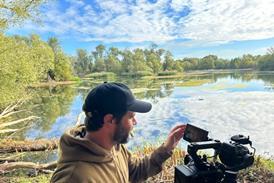The 8k format was initially promised for 2025 but engineers at Japan's NHK, one of the broadcaster's involved in its development, have suggested that a full production system will be possible by 2020 with public attended applications possible even earlier.
NHK's project leader, Dr Keiichi Kubota, said NHK's goal is for Super Hi-Vision to be enjoyed in every home. “It is our responsibility to show broadcasters and network operators that it is not just a dream but a real future television system," he said.
Live Super Hi-Vision was shown at IBC on a 275-inch theatre screen delivered to Amsterdam via fibre and satellite from London and Torino with partners that included outside broadcaster SIS, Cable and Wireless and Siemens.
NHK has developed a special 8k sensor with 33 megapixels for the prototype Super Hi-Vision camera systems and is using prototype projectors.
However, despite optimism and the revelation that the compression technology which will allow the transmission of Super Hi-Vision is improving, domestic displays and television sets are still some way off.
Research and Development support comes from the BBC, RAI and the EBU.
Super Hi-Vision provides 7680 x 4320 pixel (32 million pixels) images with 22.2 channel audio. HDTV offers two million pixels at 1920 x 1080.


























No comments yet